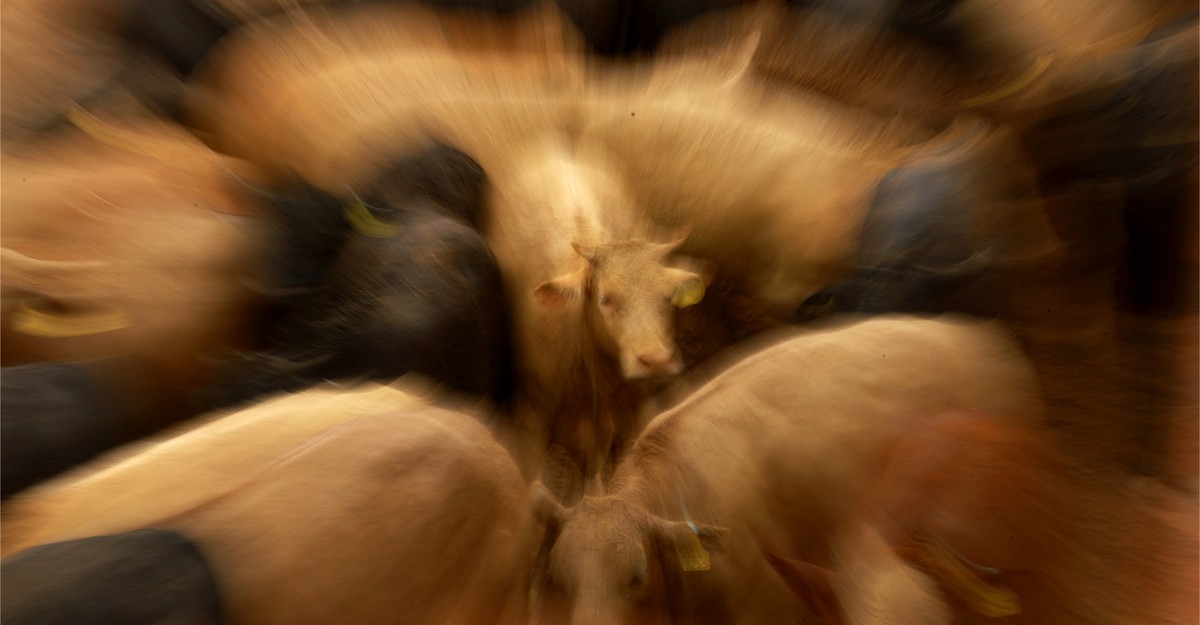Understanding The Screwworm Fly: Prevention And Control Strategies

Welcome to your ultimate source for breaking news, trending updates, and in-depth stories from around the world. Whether it's politics, technology, entertainment, sports, or lifestyle, we bring you real-time updates that keep you informed and ahead of the curve.
Our team works tirelessly to ensure you never miss a moment. From the latest developments in global events to the most talked-about topics on social media, our news platform is designed to deliver accurate and timely information, all in one place.
Stay in the know and join thousands of readers who trust us for reliable, up-to-date content. Explore our expertly curated articles and dive deeper into the stories that matter to you. Visit Best Website now and be part of the conversation. Don't miss out on the headlines that shape our world!
Table of Contents
Understanding the Screwworm Fly: Prevention and Control Strategies
The screwworm fly, a parasitic insect with devastating consequences for livestock and wildlife, continues to pose a significant threat to agricultural economies and ecosystems worldwide. Understanding its lifecycle, behavior, and effective control strategies is crucial for minimizing its impact. This article delves into the biology of the screwworm fly, explores effective prevention methods, and examines current control strategies, including both traditional and innovative approaches.
What is a Screwworm Fly?
The screwworm fly (Cochliomyia hominivorax) is a species of blow fly notorious for its parasitic larvae. Female flies lay their eggs on open wounds or mucous membranes of warm-blooded animals. Upon hatching, the larvae burrow into the host's flesh, feeding on living tissue and causing severe myiasis – a parasitic infestation. This can lead to significant pain, infection, and even death in livestock and wildlife, causing substantial economic losses for farmers and ranchers. Human infestations, while less common, are also possible and require immediate medical attention.
Screwworm Fly Lifecycle: Understanding the Enemy
Understanding the screwworm fly's lifecycle is key to effective control. The process unfolds as follows:
- Egg Laying: Adult female flies lay eggs near wounds or orifices.
- Larval Stage: Eggs hatch into larvae (maggots) which burrow into the host's tissue. They feed and grow, molting several times.
- Pupation: Mature larvae drop to the ground, pupating in the soil.
- Adult Emergence: Adult flies emerge from pupae, ready to mate and begin the cycle anew.
This rapid lifecycle, typically lasting 2-3 weeks, contributes to the rapid spread and devastating impact of screwworm infestations.
Prevention Strategies: A Proactive Approach
Prevention is always the most cost-effective strategy. Key preventive measures include:
- Wound Management: Prompt and effective treatment of any wounds on livestock is critical. Keeping wounds clean and covered prevents fly access.
- Sanitation: Maintaining clean and hygienic animal housing reduces breeding grounds for flies. Regular cleaning and removal of manure are essential.
- Strategic Grazing: Managing grazing patterns can help reduce the risk of injury and subsequent infestation.
- Early Detection: Regularly inspecting livestock for any signs of screwworm infestation is crucial for early intervention.
Control Strategies: Combating the Infestation
Several control strategies are employed to combat screwworm infestations:
- Insecticides: While effective for adult fly control, insecticides have limitations in reaching larvae already burrowed within the host. Their use should be guided by expert advice and consider environmental impact.
- Sterile Insect Technique (SIT): This environmentally friendly method involves releasing large numbers of sterile male flies into the population, reducing reproductive success and eventually eradicating the infestation. This technique has been highly successful in several regions. Learn more about the .
- Surgical Removal: For heavily infested animals, surgical removal of larvae may be necessary. This often requires veterinary intervention.
- Pharmaceuticals: Certain topical medications can be used to kill larvae and prevent further infestation.
Conclusion: A Collaborative Effort
The control and prevention of screwworm infestations require a collaborative effort from farmers, ranchers, veterinarians, and government agencies. By implementing integrated pest management strategies that combine preventative measures with appropriate control techniques, we can minimize the impact of this devastating pest on animal health and agricultural productivity. Staying informed about the latest research and control methods is crucial for ensuring the long-term success of these efforts. Regular monitoring and early detection remain key to successful management.

Thank you for visiting our website, your trusted source for the latest updates and in-depth coverage on Understanding The Screwworm Fly: Prevention And Control Strategies. We're committed to keeping you informed with timely and accurate information to meet your curiosity and needs.
If you have any questions, suggestions, or feedback, we'd love to hear from you. Your insights are valuable to us and help us improve to serve you better. Feel free to reach out through our contact page.
Don't forget to bookmark our website and check back regularly for the latest headlines and trending topics. See you next time, and thank you for being part of our growing community!
Featured Posts
-
 Official June 2025 Social Security Payment Calendar Usa
May 28, 2025
Official June 2025 Social Security Payment Calendar Usa
May 28, 2025 -
 Rafael Nadals French Open Exit Tears Applause And A Legends Farewell
May 28, 2025
Rafael Nadals French Open Exit Tears Applause And A Legends Farewell
May 28, 2025 -
 Research Cuts Spark Nih Staff Revolt Walkout During Directors Meeting
May 28, 2025
Research Cuts Spark Nih Staff Revolt Walkout During Directors Meeting
May 28, 2025 -
 American Dream Or German Comfort A Return Home Reveals Unexpected Challenges
May 28, 2025
American Dream Or German Comfort A Return Home Reveals Unexpected Challenges
May 28, 2025 -
 Physicians Plea For Human Connection To Highlight Harvard Graduation
May 28, 2025
Physicians Plea For Human Connection To Highlight Harvard Graduation
May 28, 2025
Latest Posts
-
 George Strait Honors Fallen Hero In Emotional North Texas Tribute
May 29, 2025
George Strait Honors Fallen Hero In Emotional North Texas Tribute
May 29, 2025 -
 Un Official Weeps Openly Over Gaza Child Casualties Watch Video
May 29, 2025
Un Official Weeps Openly Over Gaza Child Casualties Watch Video
May 29, 2025 -
 Como Organizar Uma Festa Portuguesa Do Planeamento A Conclusao
May 29, 2025
Como Organizar Uma Festa Portuguesa Do Planeamento A Conclusao
May 29, 2025 -
 Analysis The Removal Of Macrons Physical Contact Ad From French Media
May 29, 2025
Analysis The Removal Of Macrons Physical Contact Ad From French Media
May 29, 2025 -
 Analyzing The Impact Of Recent Us Jailbreaks On Public Perception Of Law Enforcement
May 29, 2025
Analyzing The Impact Of Recent Us Jailbreaks On Public Perception Of Law Enforcement
May 29, 2025
